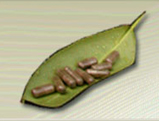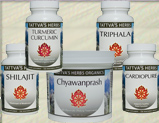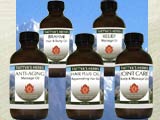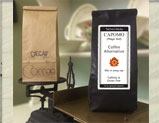 Loading... Please wait...
Loading... Please wait...Guggul – “One that protects against diseases.”
Posted on 2nd Aug 2012
Guggul or guggulu (commiphora mukul, also commiphora wightii) is derived from the gummy resinous exudate of a plant closely related to myrrh that is found in arid to semi-arid areas of Northern India, Bangladesh and Pakistan. This tree has been used in Ayurvedic medicine for centuries, and Ayurvedic texts dating back to 600 BC recommend it for treatment of atherosclerosis and digestive disorders.
The Sanskrit definition of the term “guggul” is “one that protects against diseases.” This attests to the wide respect and therapeutic Ayurvedic applications for this botanical, considered to be the most important herb for the removal of “ama,” or toxic substances which accumulate as a result of sluggish digestion and circulation associated with a slowing of metabolism.
Similar to another important Ayurvedic preparation called triphala, guggul is considered tridoshic, or balancing to all three doshas in the body. The three doshas, or bodily constitutions represent the foundation of traditional Ayurveda. These are: kapha or the anabolic humour, watery humour; pitta or the catabolic, fiery humour; and vata, the air or nervous system humour. When all three humours are in balance, the result is health and wellness. When one or more are in excess or deficient this represents imbalance or disease. Guggul stimulates pitta and thus enhances warmth, digestion, circulatory and reproductive processes. It also regulates vata (nerve force) and kapha (fluidic aspects).
As an “ama”-resolving herb, guggul has a wide range of applications beginning with rheumatic and arthritic pains, lowering high cholesterol, “hardening of the arteries” (atherosclerosis), and obesity. Guggul is warming and stimulates metabolism that is why it is one of the few botanicals that has been used to treat hypothyroid conditions. In addition, it is used to treat a sluggish liver, malaria, to stimulate libido, nervous diseases, bronchial congestion, cardiac and circulatory problems, weak digestion, gynecological problems, leucorrhea, sterility, impotence, and various skin diseases including acne and psoriasis. (One of the substances contained in Guggul which is known to lower cholesterol and triglycerides is also noted for its ability to decrease the redness and swelling that occurs in some types of acne) Guggul, as with other resins, is excreted through the skin, mucus membranes and the kidneys. This is what makes it particularly useful for the urinary tract and for a wide number of skin diseases.
Guggul has been used for over 3,000 years and is described in all of the classical Ayurvedic texts including the Sushruta Samhita (3rd to 4th centuries) where it is especially recommended for the treatment of rheumatic pains and obesity, as mentioned above. It is one of the most important rasayanas (herbal tonics) of Ayurveda where it is described as warm, dry, pungent-flavored, and aromatic with nutritive, lubricant, stimulant and digestion-enhancing properties. Current research substantiates its benefit for the treatment of elevated blood lipids and coronary and arterial plaque known as atherosclerosis. As a result, today in India standardized guggul extracts are being approved for lowering elevated serum cholesterol and triglyceride levels.
Tattva’s Herbs natural supplements combine the wisdom of Mother Nature with the very latest technology known as supercritical extraction. This state of the art technology delivers a very pure extract that is both full spectrum and extremely concentrated at the same time. It is so pure that you can actually smell the qualities of the original herb in the extract, and you are greeted with this aroma when you open a bottle. It is sweet and powerful. There is simply no other extraction method so effective that you can actually smell the purity, fragrance and essence of the herb. This is a testimony to the great care that goes into the selection of the herbs and the supercritical extraction process itself. To give you an idea of the potency and concentration of the extract, we can often use as much as 200 to 250 pounds of fresh herbs to produce just one pound of supercritical extract. All of the herbs are grown on organic farms and selected with the greatest of care. The supercritical process produces an exceptionally broad representation of the herbs’ active constituents, which oftentimes traditional methods of extraction cannot even begin to extract. Furthermore, the supercritical process does not use any chemical solvents at all. Instead, it utilizes safe and environmentally friendly carbon dioxide, the same carbon dioxide that is found in your sparkling water.
Finally, the supercritical extract, post-supercritical extract (PSE) (a water-soluble extract), and the raw whole herb are combined to create our herbal formula. The finished product is superior in terms of both freshness and breadth of active constituents. It delivers the full spectrum of the herbs with a potency that cannot be surpassed. In addition, all of the herbs are independently tested for heavy metals and other contaminates. The result is an exquisite formula that delivers simplicity, purity and incredible potency all at once.
Click here for Tattva’s Herbs Guggul.















